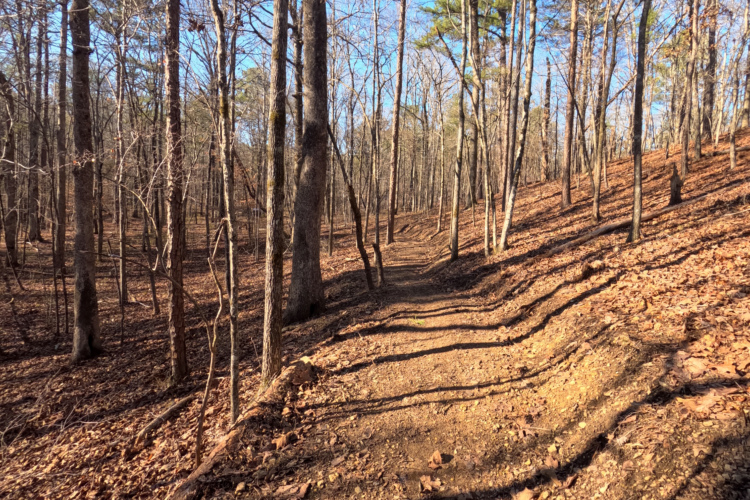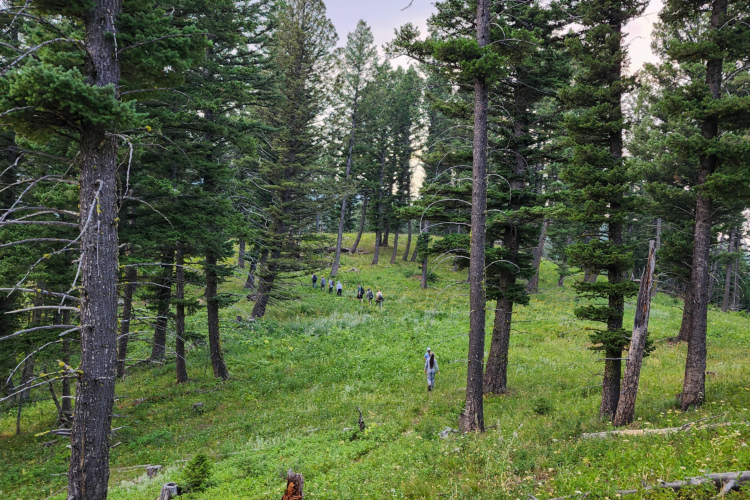Greg Heil: Great, so we’ve talked a lot about where IMBA is going and numbers of people supporting IMBA and people being mountain bikers first. The next question really has to do with the future and where IMBA’s going from here. Jeff OnTrails, a Singletracks member, said, “If IMBA is going to continue being the most recognizable advocacy name in mountain biking, what are the possible strategies for growing the IMBA member base from 15,000 to 50,000?”
I think 15’s low by actually like double, but Jeff goes on to make a good point. He says, “Out of roughly 8 million mountain bikers in the US,” which is the best, most accurate number that we have for mountain biking in the US, “and if those strategies successfully doubled or quadrupled current membership over the next five to 10 years or so, what tangible benefits will all members possibly see from the added revenue and staff?”
I think that mainly speaks to, “what’s IMBA going to do to get more mountain bikers to identify with them?”
Dave Wiens: Yeah, that’s a great question, and it’s a big challenge. One of the challenges that I see is that there’s no requirement to join anything to go mountain biking, nor is there a fee to mountain bike in most places. It’s something that’s free. Trails are free. Obviously the equipment costs money, but if you have a bike and a helmet maybe, and some gloves, you can go mountain biking. You don’t have to join IMBA. Of those 8 million mountain bikers, it would be interesting to know how many of them are aware of IMBA. I know we could do a better job with marketing, and we plan to do that.
In the nonprofit world, and I think this is maybe where IMBA may have been before I took over is that as a nonprofit, you want to have as much of your resources put into mission as possible, and mission is doing good work on the ground. It’s not necessarily buying ads or hiring people to do social media, basically spending money. But it is important to tell the stories so that people know what we’re doing, and the marketing piece is very important and there’s no way that we’re going to grow membership without marketing, so we’re going to have to put resources into marketing efforts to spread the word because as I said, of those 8 million mountain bikers, how many of them know about IMBA, the International Mountain Biking Association? Not sure they all do, but certainly would be a goal to get as many of them as possible to know about it.
But where do you come across IMBA? Maybe someone will tell you about it, but if you think about flipping through a magazine, if you read closely, you might read about IMBA and your curiosity would be piqued and you might do a little web search and then you find out about the organization. You can go to the website.
So we need to introduce IMBA to a lot people if we’re going to grow, if we’re going to grow our numbers. If that were to happen, if we were able to increase our membership a lot and we had more resources, we would want to put those resources into our policy and access government relations, the national level. We want to put that money into trails and trails systems, and the most logical way I can think of is money that could be leveraged then.
If it’s matching funds for a local chapter or a club, then they could a grant for three, four, five times that amount to help build a great trail system. That’s another great use of the funds, and then we can’t ever lose sight of the educational piece, and that’s something that the chapters and the local organizations can help us with too, but as we get more and more mountain bikers and new mountain bikers and younger mountain bikers as we’re seeing this sport trickle down to younger and younger kids, which is a phenomenal thing, it’s so great, we need to make sure that we instill the values of stewardship and respecting other trail users and being courteous and responsible riding.
Policy and access trails, actual trails all around the country and then advocacy, or education rather, and responsible riding, those are the areas that I believe we’ll focus our efforts on. I’d like to think we won’t get too far outside of that. I think a very focused IMBA is important to the future. I know it is, especially for now as we have less resources. We’d really been laser-focused on just a few things but even if we had unlimited resources, I’m not sure we would want to vary too far from those basic pillars of what we can offer mountain biking.











9 Comments
May 16, 2017
May 16, 2017
May 16, 2017
May 15, 2017
The vast majority of the landmass is private property, so throw that out right from the get go. After that, most of what's left is still developed, paved, logged, mined, etc. The fact is that the vast majority of what is left over as actual backcountry is consumed by Wilderness. (85% in my home state of Colorado, even more in some states). Backcountry cyclists don't want to ride most of the other 98% any more than backcountry hikers want to hike those cities, wheatfields, highways, etc.
May 18, 2017
That's because it is a correct statistic. Even Ted Stroll has said that
Wilderness Areas will never be over 3% of the land area in the
Lower 48 states. There simply isn't very much land left that would
qualify as Wilderness.
What's disappointing is that Dave didn't take a harder line against the STC.
The STC is spewing misinformation every time they do something. Dave should have
called them out on that. And what's disappointing is that you are using that 85% statistic
again. Take a look at your home state of Colorado. Yes, it has 4 million acres of Wilderness
and areas mountain bikes are banned. But Colorado has over 14 million acres of public land
so you have 10 million acres to romp around on with your mountain bike. You could combine the
States of Massachusetts and New Jersey together and their total area is less than 10 million acres.
Everybody in the states that don't have very much public lands are feeling sorry for you.
May 16, 2017
May 16, 2017
May 15, 2017
I appreciate that the E-bike question was asked and felt Dave's answer was right in line with reality, i.e., The only REAL argument against Ebikes, imo, is trail access issues. And like the STC's mission, I appreciate that it's an issue that should be dealt with on a local level rather than some rubber stamp Gestapo regime.
Conversely, although I understand IMBA's point about Wilderness, minimizing the issue to 2% of all public lands is a misrepresentation of the issue as a whole. Wilderness is a BIG issue that goes way beyond just bike access where it's appropriate.
May 16, 2017